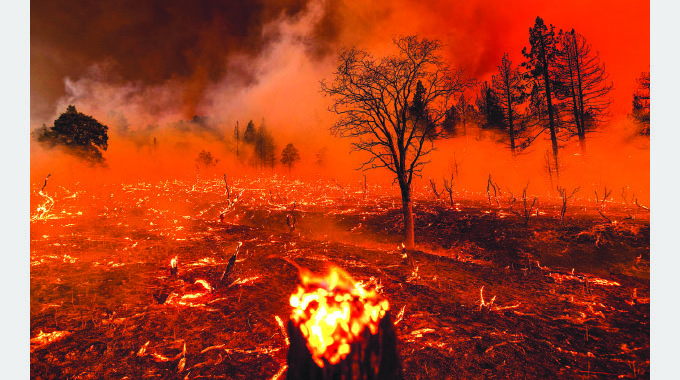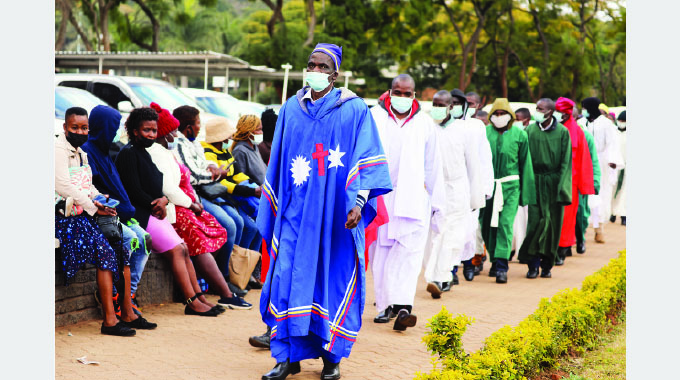Tighten penalties to prevent veld fires

Obert Chifamba-Agri-Insight
IT’S exactly 18 days before the official fire season sets on July 31 and officially ends on October 31.
On the ground, the situation is, however, different with the fire season starting well before July 31 and also ending way after October 31 every year, thanks to the action of unprincipled citizens who start random fires and leave them to consume vast hectares of both agricultural and forested land, destroy property and in some cases even claim human lives.
With the 2021/22 farming season coming to an end recently, the country is now in the dry season — a period during which the range land is generally drier, while the weather is characterised by windy and hot conditions that usually make up the ammunition veld fires need to turn rampant.
In recent years, the dry season has become synonymous with rampant veld fires that have kept the entire country on its toes each time seasons change.
It is not surprising that the Environmental Management Agency (EMA) is currently seized with conscientising the citizenry on ways of handling veld fires or even avoiding them.
EMA has since prepared a veld fire risk prediction for 2022 that is identifying the veld fire risk zones in the country so that stakeholders in those regions are not caught flat-footed, but ready to deal with any fires that come their way while avoiding actions that create opportunities for the fires to start.
“We produced the veld fire risk prediction using various geo-spatial data based on different parameters, which include — normalised difference vegetation index (NDVI), mean annual rainfall from 1981 — 2021, temperature long term from 2000 — 2021, mean annual evapotranspiration from 2002 — 2021 and veld fire points detected by Moderate Resolution Imaging Spectroradiometer (MODIS) satellite for the year 2021,” EMA environmental education and publicity manager Amkela Sidange commented recently.
EMA’s veld fire risk prediction has since revealed that the country is generally in the medium (40, 3 percent) to high (34, 5 percent) risk to veld fires this year, translating to 74, 8 percent of the country being in the medium to high risk category.
The low risk zones cover 22,8 percent, while 2,4 percent of the country is in the extreme high risk to veld fires.
It is, however, a bit refreshing to observe that in 2021, about 89,9 percent of the country was in the high (65,2 percent) to extreme high (24,7 percent) risk to veld fires.
This means less fire trouble for the country this time around but that does not mean people have to be less vigilant or less prepared for the fires.
In fact, the country should build on the current situation to build a stronger fire fighting system, while ensuring that natural factors such as too much biomass lying around are also safely put to better use other than being left in the veld or fields where it will serve as fuel for fires.
For this year, provinces that are highly exposed to the veld fires are Manicaland, Mashonaland West, Mashonaland Central, Mashonaland East and Matabeleland North.
On the other hand, districts that fall in the extreme high risk are Nyanga, Mutasa, Chipinge, Zvimba, Mazowe, Centenary, Makonde and Hwange.
This, therefore, means that such areas should be carefully and closely monitored as they may culminate into fire danger zones.
These areas need to have already formulated fire management plans and strategies starting from the village and farm level to even sector level.
Failure to manage biomass abundant in these areas exacerbates vulnerability to veld fires hence the need for communities and farmers in those areas to implement biomass reduction activities such as baling it for hay and thatch grass combing, just to name a few.
Farmers now have multiple uses to which they can put the abundant biomass generated by the rains that fell abundantly in the past two seasons.
They can use it as mulching material in the Pfumvudza/Intwasa programme.
The biomass will first serve the role of trapping moisture in the soil before decaying to form organic manure for use by plants.
They can also bale and store it as hay for later feeding of livestock, especially during the drier times of the year.
Biomass can also be sold to those areas where there are deficits, which will leave the farmers with an income.
This aside, farmers can also help their cause by opening standard fireguards that are nine metres wide on either side of the boundary fence to prevent the spread of veld fires during the dry season.
The opening of fireguards will ensure fires are contained within one locality and are also easy to manage.
The success of all these initiatives, however, hinges on the full cooperation and participation of communities regardless of the different activities that people do for a living.
The fires will not be selective when they come destroying everything in their path.
Veld fires affect strategic economic sectors such as agriculture, communication and hospitality industry and the public health and safety.
In 2021, property worth over US$370 000 was destroyed by veld fires and eight lives were unfortunately also lost in the process. It is against this background that veld fire risk prediction for the year 2022 has been done to avert similar loses.
All the efforts by EMA, general public and other key stakeholders will, however, need to be backed by stricter law enforcement mechanisms that include making current penalties for illegal starting of fires stiffer than what they are now.
At the moment, an offender is liable to paying a fine of $500 000 (local currency) or a custodial sentence not exceeding a year.
This is under Level 14. In some cases, an offender may be made to do both — a fine and jail term, which falls under Level 8-14.
The sad reality is that some of these offenders might even have started fires that go on to claim human lives, which translates to murder and therefore deserving a more castigatory sentence than what Levels 8 and 14 offer.
Some of the fires would also have destroyed critical infrastructure that is costly to re-construct or whose unavailability may point towards loss of lives or the emergence of certain problems for communities.
Fines, for instance, are quoted in local currency, which offenders can easily mobilise by simply converting a few US dollars into local denominations on the parallel market and pay up so they will not feel the pain.
It may make sense if legislators agree on longer custodial sentences for those convicted of starting such fires while those being fined are also made to pay bigger amounts in US dollar denominations.
The fines must not be less than four figures regardless of the nature of the fire they would have started and unleashed on the communities.








Comments